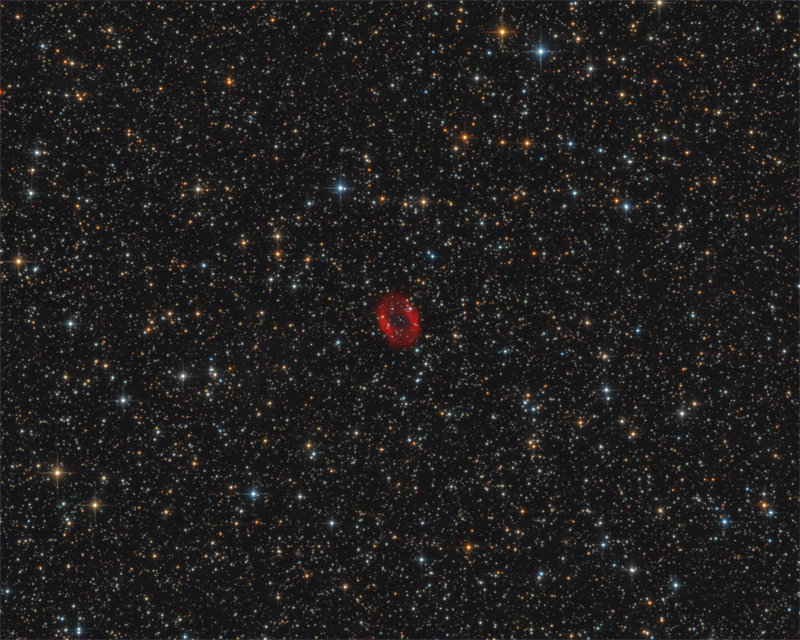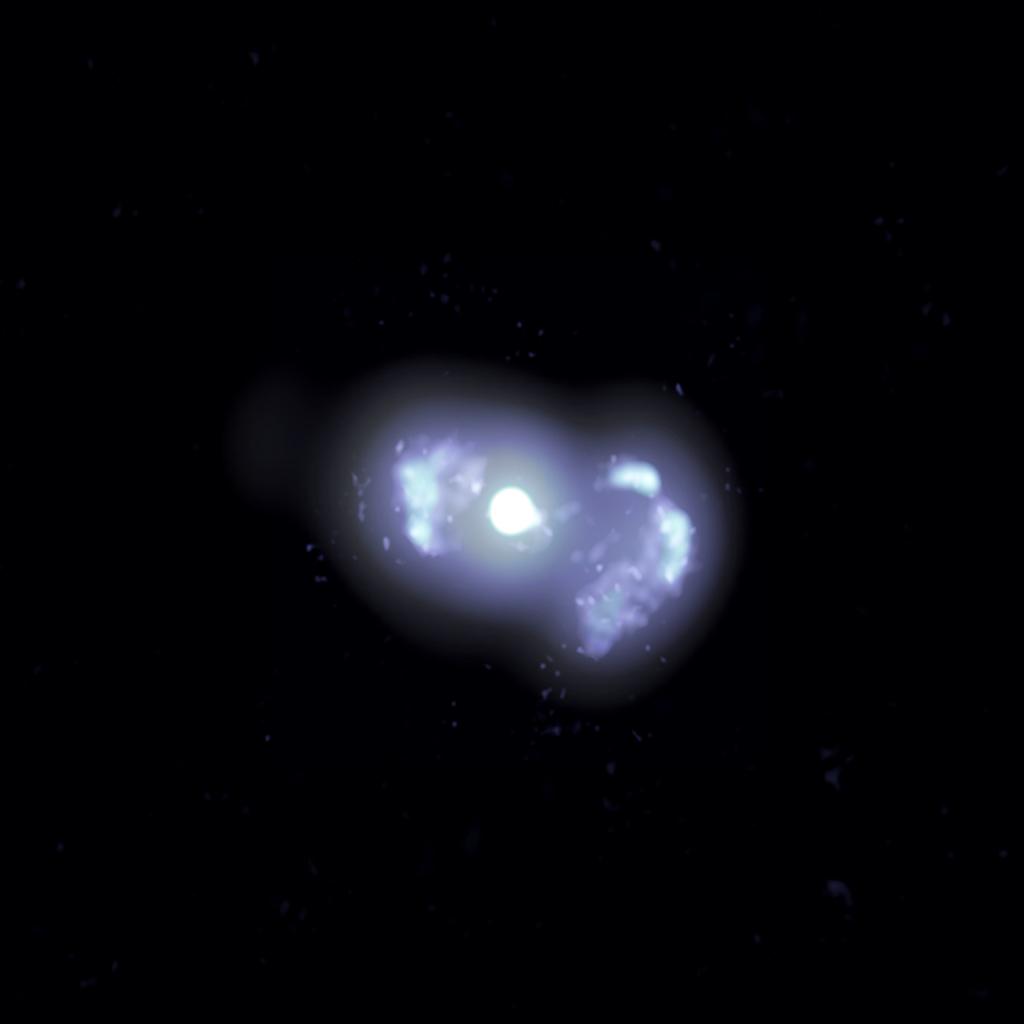Found Images: 2020 August
-
starsurfer
- Stellar Cartographer
- Posts: 5409
- Joined: Thu Mar 15, 2012 7:25 pm
Re: Found Images: 2020 August
Longmore 1
http://www.capella-observatory.com/Imag ... Ns/Lo1.htm
Copyright: Dietmar Böcker, Ernst von Voigt, Stefan Binnewies and Josef Pöpsel
http://www.capella-observatory.com/Imag ... Ns/Lo1.htm
Copyright: Dietmar Böcker, Ernst von Voigt, Stefan Binnewies and Josef Pöpsel
-
starsurfer
- Stellar Cartographer
- Posts: 5409
- Joined: Thu Mar 15, 2012 7:25 pm
Re: Found Images: 2020 August
viewtopic.php?t=40837starsurfer wrote: ↑Sun Aug 16, 2020 10:27 pm NGC 2899
https://www.eso.org/public/images/eso2012a/
Copyright: ESO
Know the quiet place within your heart and touch the rainbow of possibility; be
alive to the gentle breeze of communication, and please stop being such a jerk. — Garrison Keillor
alive to the gentle breeze of communication, and please stop being such a jerk. — Garrison Keillor
ESO: A Kaleidoscope of Colour
A Kaleidoscope of Colour
ESO Picture of the Week | 2020 Aug 17
ESO Picture of the Week | 2020 Aug 17
Incredible splashes of colour — greens, reds, blues, and every colour in between — paint the night sky above ESO’s Paranal Observatory in Chile, illuminating the barren desert landscape below. The light from billions of stars, glowing nebulae, and other cosmic phenomena creates the giant arch of the Milky Way, which stretches across the sky and perfectly frames the Very Large Telescope (VLT) sitting atop the peak at the centre of the image (Cerro Paranal).
This particular view was taken from the site of ESO’s Visible and Infrared Survey Telescope for Astronomy (VISTA). The winding road between VISTA and the VLT can be seen below, illuminated by faint yellow lights. These are, notably, the only human-made lights visible in the entire scene — Paranal staff take great care not to create unnecessary light pollution that may hinder the astronomical work at the world-class observing site.
The Milky Way is not the only galaxy visible in this image. Two of our home galaxy’s natural satellites and nearest neighbours — the Large and Small Magellanic Clouds — can be seen as diffuse blobs of light tucked beneath the arch, bathed in natural green and red airglow.
Know the quiet place within your heart and touch the rainbow of possibility; be
alive to the gentle breeze of communication, and please stop being such a jerk. — Garrison Keillor
alive to the gentle breeze of communication, and please stop being such a jerk. — Garrison Keillor
HEIC: Cosmic Fireworks (NGC 2442)
Cosmic Fireworks
ESA Hubble Picture of the Week | 2020 Aug 17
ESA Hubble Picture of the Week | 2020 Aug 17
This image from the NASA/ESA Hubble Space Telescope features the spectacular galaxy NGC 2442.
This galaxy was host to a supernova explosion, known as SN2015F, that was created by a white dwarf star. The white dwarf was part of a binary star system and syphoned mass from its companion, eventually becoming too greedy and taking on more than it could handle. This unbalanced the star and triggered runaway nuclear fusion that eventually led to an intensely violent supernova explosion.
SN2015F was spotted in March 2015 in the galaxy named NGC 2442, nicknamed the Meathook Galaxy owing to its extremely asymmetrical and irregular shape. The supernova shone brightly for quite some time and was easily visible from Earth through even a small telescope until later that summer.
Know the quiet place within your heart and touch the rainbow of possibility; be
alive to the gentle breeze of communication, and please stop being such a jerk. — Garrison Keillor
alive to the gentle breeze of communication, and please stop being such a jerk. — Garrison Keillor
-
starsurfer
- Stellar Cartographer
- Posts: 5409
- Joined: Thu Mar 15, 2012 7:25 pm
-
starsurfer
- Stellar Cartographer
- Posts: 5409
- Joined: Thu Mar 15, 2012 7:25 pm
Re: Found Images: 2020 August
Sailboat Cluster (NGC 225)
https://www.flickr.com/photos/cfaobam/49393302836
Copyright: Carsten Frenzl
https://www.flickr.com/photos/cfaobam/49393302836
Copyright: Carsten Frenzl
-
starsurfer
- Stellar Cartographer
- Posts: 5409
- Joined: Thu Mar 15, 2012 7:25 pm
Re: Found Images: 2020 August
vdB152
https://www.astrobin.com/f9hflr/
Copyright: Steve Milne and Barry Wilson
Processing: Steve Milne
https://www.astrobin.com/f9hflr/
Copyright: Steve Milne and Barry Wilson
Processing: Steve Milne
-
starsurfer
- Stellar Cartographer
- Posts: 5409
- Joined: Thu Mar 15, 2012 7:25 pm
AAS: A Solar Eclipse from the Ground and Space
A Solar Eclipse from the Ground and Space
AAS NOVA | Featured Image | 2020 Aug 17
Compositing Eclipse Images from the Ground and from Space ~ Christian A. Lockwood et al
AAS NOVA | Featured Image | 2020 Aug 17
Susanna Kohler wrote:This stunning image of the Sun and its corona (click for a closer look) is composited from hundreds of individual frames captured by Nicolas Lefaudeux at the Cerro Tololo Inter-American Observatory in Chile. The occasion: a team effort to image a total solar eclipse in July 2019.
In a recent Research Note led by Christian Lockwood (Williams College), you can read about how the team gathered images (like those composited above) using three different observatories in Chile during the eclipse. Lockwood and collaborators then combined these ground-based images — which had high resolution and a wide field of view — with close-in observations of the solar disk made by space-based satellites.
By putting these overlapping observations together, the team could paint a full picture of the Sun’s tenuous, extended outer atmosphere during solar minimum. To learn more about the project, check out the article below.
Compositing Eclipse Images from the Ground and from Space ~ Christian A. Lockwood et al
- Research Notes of the AAS 4(8):133 (2020 Aug 07) DOI: 10.3847/2515-5172/abacb5
Know the quiet place within your heart and touch the rainbow of possibility; be
alive to the gentle breeze of communication, and please stop being such a jerk. — Garrison Keillor
alive to the gentle breeze of communication, and please stop being such a jerk. — Garrison Keillor
-
starsurfer
- Stellar Cartographer
- Posts: 5409
- Joined: Thu Mar 15, 2012 7:25 pm
Re: Found Images: 2020 August
Abell 33
http://www.chart32.de/index.php/component/k2/item/317
Copyright: CHART32
Processing: Bernd Flach-Wilken
http://www.chart32.de/index.php/component/k2/item/317
Copyright: CHART32
Processing: Bernd Flach-Wilken
-
starsurfer
- Stellar Cartographer
- Posts: 5409
- Joined: Thu Mar 15, 2012 7:25 pm
Re: Found Images: 2020 August
Abell 34
http://www.chart32.de/index.php/component/k2/item/330
Copyright: CHART32
Processing: Bernd Flach-Wilken
http://www.chart32.de/index.php/component/k2/item/330
Copyright: CHART32
Processing: Bernd Flach-Wilken
-
starsurfer
- Stellar Cartographer
- Posts: 5409
- Joined: Thu Mar 15, 2012 7:25 pm
Re: Found Images: 2020 August
ESO: A Phenomenal View of a Phenomenal Spiral (NGC 1365)
A Phenomenal View of a Phenomenal Spiral
ESO Picture of the Week | VLT | MUSE | 2020 Aug 24
ESO Picture of the Week | VLT | MUSE | 2020 Aug 24
The MUSE instrument on ESO’s Very Large Telescope (VLT) in Chile has observed NGC 1365, a double-barred spiral galaxy located about 56 million light-years away in the Fornax galaxy cluster, allowing us to construct this spectacular colour image. The galaxy is also known as the Great Barred Spiral Galaxy, after its two central bar-shaped structures, made up of stars.
The two bars of NGC 1365 are a rare phenomenon and are thought to have originated by the combined effects of galaxy rotation and the complex dynamics of the stars. Its largest bar of stars, too large for its structure to be visible in this image, connects its outer spiral arms to its centre. What we can see is the much smaller second bar of stars, nestled within the main bar. It is likely this secondary bar acts independently of the main bar, rotating more rapidly than the rest of the galaxy.
Standing for Multi-Unit Spectroscopic Explorer, the MUSE instrument captured this image in optical and infrared light, showing the gas and dust in the central region of the galaxy. Installed on Yepun, one of the four 8.2-metre telescopes that make up the VLT, the capabilities of this instrument have allowed for some of the most comprehensive and detailed studies of our Universe to date, including surveys of distant galaxies, supermassive black holes and even the source of gravitational waves.
Know the quiet place within your heart and touch the rainbow of possibility; be
alive to the gentle breeze of communication, and please stop being such a jerk. — Garrison Keillor
alive to the gentle breeze of communication, and please stop being such a jerk. — Garrison Keillor
HEIC: At the Edge of the Blast (Cygnus Loop)
At the Edge of the Blast
ESA Hubble Picture of the Week | 2020 Aug 24
ESA Hubble Picture of the Week | 2020 Aug 24
While appearing as a delicate and light veil draped across the sky, this image from the NASA/ESA Hubble Space Telescope actually depicts a small section of the Cygnus supernova blast wave, located around 2400 light-years away. The name of the supernova remnant comes from its position in the northern constellation of Cygnus (The Swan), where it covers an area 36 times larger than the full moon.
The original supernova explosion blasted apart a dying star about 20 times more massive than our Sun between 10 000 and 20 000 years ago. Since then, the remnant has expanded 60 light-years from its centre. The shockwave marks the outer edge of the supernova remnant and continues to expand at around 350 kilometres per second. The interaction of the ejected material and the low-density interstellar material swept up by the shockwave forms the distinctive veil-like structure seen in this image.
Know the quiet place within your heart and touch the rainbow of possibility; be
alive to the gentle breeze of communication, and please stop being such a jerk. — Garrison Keillor
alive to the gentle breeze of communication, and please stop being such a jerk. — Garrison Keillor
Re: ESO: A Phenomenal View of a Phenomenal Spiral (NGC 1365)
bystander wrote: ↑Mon Aug 24, 2020 3:07 pm A Phenomenal View of a Phenomenal Spiral
ESO Picture of the Week | VLT | MUSE | 2020 Aug 24The MUSE instrument on ESO’s Very Large Telescope (VLT) in Chile has observed NGC 1365, a double-barred spiral galaxy located about 56 million light-years away in the Fornax galaxy cluster, allowing us to construct this spectacular colour image. The galaxy is also known as the Great Barred Spiral Galaxy, after its two central bar-shaped structures, made up of stars.
The two bars of NGC 1365 are a rare phenomenon and are thought to have originated by the combined effects of galaxy rotation and the complex dynamics of the stars. Its largest bar of stars, too large for its structure to be visible in this image, connects its outer spiral arms to its centre. What we can see is the much smaller second bar of stars, nestled within the main bar. It is likely this secondary bar acts independently of the main bar, rotating more rapidly than the rest of the galaxy.
Standing for Multi-Unit Spectroscopic Explorer, the MUSE instrument captured this image in optical and infrared light, showing the gas and dust in the central region of the galaxy. Installed on Yepun, one of the four 8.2-metre telescopes that make up the VLT, the capabilities of this instrument have allowed for some of the most comprehensive and detailed studies of our Universe to date, including surveys of distant galaxies, supermassive black holes and even the source of gravitational waves.
Oh, what a stunningly colorful and beautiful picture of the center of NGC 1365! I have a problem, though - I don't fully understand what I'm seeing!
NGC 1365 is a double-barred spiral galaxy? Only one bar is easy - extremely easy! - to see. Where is the other one?
Is there another (very small) bar running through the innermost part of NGC 1365? Can you see it?
Ann
Color Commentator
NRAO: TXS 0128+554 — A Galaxy's Stop-and-Start Young Radio Jets
TXS 0128+554: A Galaxy's Stop-and-Start Young Radio Jets
National Radio Astronomy Observatory Image Release | 2020 Aug 25
TXS 0128+554: A Young Gamma-Ray-Emitting Active Galactic Nucleus with Episodic Jet Activity ~ M. L. Lister et al
NASA Missions Explore a ‘TIE Fighter’ Active Galaxy
NASA | GSFC | Fermi | CXC | 2020 Aug 25
National Radio Astronomy Observatory Image Release | 2020 Aug 25
In this image, made with the National Science Foundation’s Very Long Baseline Array (VLBA), young, radio-emitting jets of material emerge from the core of an elliptical galaxy some 500 million light-years from Earth. After NASA’s Fermi Gamma-ray Space Telescope detected high-energy gamma rays coming from the object, scientists used the VLBA to make high-resolution images of the galaxy, dubbed TXS 0128+554.Credit: Lister et al.; Sophia Dagnello, NRAO/AUI/NSF
This image is a composite of six VLBA images made at observing frequencies ranging from 2.2 GigaHertz (GHz) to 22.2 GHz. The broad lobes on either side of the bright core are the result of jet activity that began roughly 80 years ago. The gap between these lobes and the central region indicates, the scientists said, that the jet activity stopped sometime after that, then resumed about 10 years ago.
“These are among the youngest known jets in such systems, and only a handful are known to emit gamma-rays,” said Matthew Lister, of Purdue University.
The bright edges of the lobes are where the ejected material, moving at about a third the speed of light, impacted material within the galaxy. The bright emitting areas total about 35 light-years across, and are at the core of the galaxy, where a supermassive black hole about one million times the mass of the Sun resides. ... << Multi-frequency composite VLBA image of the galaxy TXS 0128+554, 500 million light years from Earth. The image shows young radio jets originating near a supermassive black hole at the core of the galaxy. The jets in this image started about 80 years ago, stopped, then resumed about 10 years ago. Animated sequence indicates the radio frequencies at which the images were made. Higher observing frequencies produce higher resolution, showing smaller details. >>
TXS 0128+554: A Young Gamma-Ray-Emitting Active Galactic Nucleus with Episodic Jet Activity ~ M. L. Lister et al
- Astrophysical Journal 889(2):141 (2020 Aug 20) DOI: 10.3847/1538-4357/aba18d
NASA Missions Explore a ‘TIE Fighter’ Active Galaxy
NASA | GSFC | Fermi | CXC | 2020 Aug 25
Last edited by bystander on Tue Aug 25, 2020 4:46 pm, edited 2 times in total.
Reason: Added GSFC and CXC article links
Reason: Added GSFC and CXC article links
Know the quiet place within your heart and touch the rainbow of possibility; be
alive to the gentle breeze of communication, and please stop being such a jerk. — Garrison Keillor
alive to the gentle breeze of communication, and please stop being such a jerk. — Garrison Keillor
-
starsurfer
- Stellar Cartographer
- Posts: 5409
- Joined: Thu Mar 15, 2012 7:25 pm
Re: HEIC: At the Edge of the Blast (Cygnus Loop)
Hubble should do a mosaic of the whole thing!bystander wrote: ↑Mon Aug 24, 2020 3:16 pm At the Edge of the Blast
ESA Hubble Picture of the Week | 2020 Aug 24While appearing as a delicate and light veil draped across the sky, this image from the NASA/ESA Hubble Space Telescope actually depicts a small section of the Cygnus supernova blast wave, located around 2400 light-years away. The name of the supernova remnant comes from its position in the northern constellation of Cygnus (The Swan), where it covers an area 36 times larger than the full moon.
The original supernova explosion blasted apart a dying star about 20 times more massive than our Sun between 10 000 and 20 000 years ago. Since then, the remnant has expanded 60 light-years from its centre. The shockwave marks the outer edge of the supernova remnant and continues to expand at around 350 kilometres per second. The interaction of the ejected material and the low-density interstellar material swept up by the shockwave forms the distinctive veil-like structure seen in this image.
-
starsurfer
- Stellar Cartographer
- Posts: 5409
- Joined: Thu Mar 15, 2012 7:25 pm
Re: Found Images: 2020 August
Sh2-1 and Sh2-7
https://www.astrobin.com/384036/
Copyright: Jeff Hall Sh2-1 is the nebula near the right and Sh2-7 is the nebula near the left.
https://www.astrobin.com/384036/
Copyright: Jeff Hall Sh2-1 is the nebula near the right and Sh2-7 is the nebula near the left.
-
starsurfer
- Stellar Cartographer
- Posts: 5409
- Joined: Thu Mar 15, 2012 7:25 pm
Re: Found Images: 2020 August
Sh2-135
https://www.astrobin.com/wwyhwt/
Copyright: Gabriel Siegl Sh2-135 is the emission nebula near the centre while the dark nebula at right is B174.
https://www.astrobin.com/wwyhwt/
Copyright: Gabriel Siegl Sh2-135 is the emission nebula near the centre while the dark nebula at right is B174.
-
starsurfer
- Stellar Cartographer
- Posts: 5409
- Joined: Thu Mar 15, 2012 7:25 pm
-
starsurfer
- Stellar Cartographer
- Posts: 5409
- Joined: Thu Mar 15, 2012 7:25 pm
-
starsurfer
- Stellar Cartographer
- Posts: 5409
- Joined: Thu Mar 15, 2012 7:25 pm
Re: Found Images: 2020 August
NGC 6819
http://www.capella-observatory.com/Imag ... GC6819.htm
Copyright: Stefan Binnewies and Josef Pöpsel
http://www.capella-observatory.com/Imag ... GC6819.htm
Copyright: Stefan Binnewies and Josef Pöpsel
-
starsurfer
- Stellar Cartographer
- Posts: 5409
- Joined: Thu Mar 15, 2012 7:25 pm
-
starsurfer
- Stellar Cartographer
- Posts: 5409
- Joined: Thu Mar 15, 2012 7:25 pm










